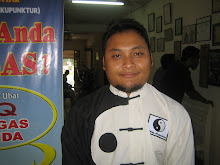Thursday, January 14, 2010
Can Pancreatitis Be Cured ?
In December 2006 the patient had a pancreatic attack which resulted in a hospital stay of four days and required the use of morphine for pain. He had been suffering with pancreatitis for two years. He blames this condition on the fact that he ate poorly during this time, mostly fast food with lots of fat and sugar. In a two-year period, he suffered four pancreatic attacks and two of these attacks resulted in hospital stays. His doctors ordered a blood test to see if amylase and lipase were elevated. They then confirmed he had pancreatitis by doing a CT scan.
In early 2007, endoscopic ultrasound imaging showed that the “head of the pancreas was enlarged and very heterogeneous with irregular gland borders, lobularity, hyperechoic and foci. These changes were also clearly identified in the neck, body and tail but were not as severe. The pancreatic duct was hyperechoic and irregular in the neck and body. The pancreas appeared diffusely swollen compared to the last examination. There were new calcifications in the head parenchyma. There was also a 7mm stone inside the main pancreatic duct (level of the head) before the bifurcation.” After he recovered from this attack, the patient adjusted his diet and sought massage therapy.
How Chinese Medicine views Chronic Pancreatitis
This condition is discussed under abdominal pain and diarrhea in TCM (Traditional Chinese Medicine).1 The pathogenesis is damp-heat phlegm statis obstructing the middle Jiao. In Western medicine, it is seen as chronic inflammation of the pancreas. Cholelithiasis and infection of the biliary tract causing reverse flow of the bile or a narrowed pancreatic duct can cause repeated attacks of pancreatitis. These are the most common causes of pancreatitis.
If not successfully treated, this condition can lead to diabetes and/or pancreatic cancer. TCM focuses on strengthening the spleen, transporting dampness, invigorating blood, and clearing heat, which can control the symptoms such as diarrhea, fatty diarrhea, emaciation, malnutrition, and abdominal distending pain. In the patient’s case, it was determined he suffered from spleen deficiency with dampness syndrome. The treatment principle determined was to strengthen the spleen and transform dampness.
In early 2007, endoscopic ultrasound imaging showed that the “head of the pancreas was enlarged and very heterogeneous with irregular gland borders, lobularity, hyperechoic and foci. These changes were also clearly identified in the neck, body and tail but were not as severe. The pancreatic duct was hyperechoic and irregular in the neck and body. The pancreas appeared diffusely swollen compared to the last examination. There were new calcifications in the head parenchyma. There was also a 7mm stone inside the main pancreatic duct (level of the head) before the bifurcation.” After he recovered from this attack, the patient adjusted his diet and sought massage therapy.
How Chinese Medicine views Chronic Pancreatitis
This condition is discussed under abdominal pain and diarrhea in TCM (Traditional Chinese Medicine).1 The pathogenesis is damp-heat phlegm statis obstructing the middle Jiao. In Western medicine, it is seen as chronic inflammation of the pancreas. Cholelithiasis and infection of the biliary tract causing reverse flow of the bile or a narrowed pancreatic duct can cause repeated attacks of pancreatitis. These are the most common causes of pancreatitis.
If not successfully treated, this condition can lead to diabetes and/or pancreatic cancer. TCM focuses on strengthening the spleen, transporting dampness, invigorating blood, and clearing heat, which can control the symptoms such as diarrhea, fatty diarrhea, emaciation, malnutrition, and abdominal distending pain. In the patient’s case, it was determined he suffered from spleen deficiency with dampness syndrome. The treatment principle determined was to strengthen the spleen and transform dampness.
Subscribe to:
Post Comments (Atom)





No comments:
Post a Comment